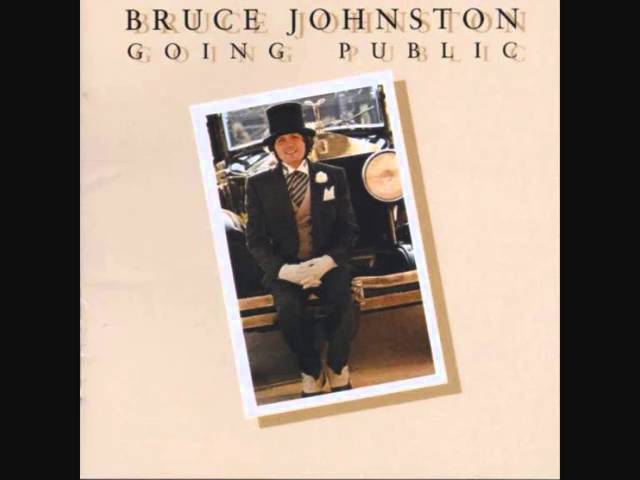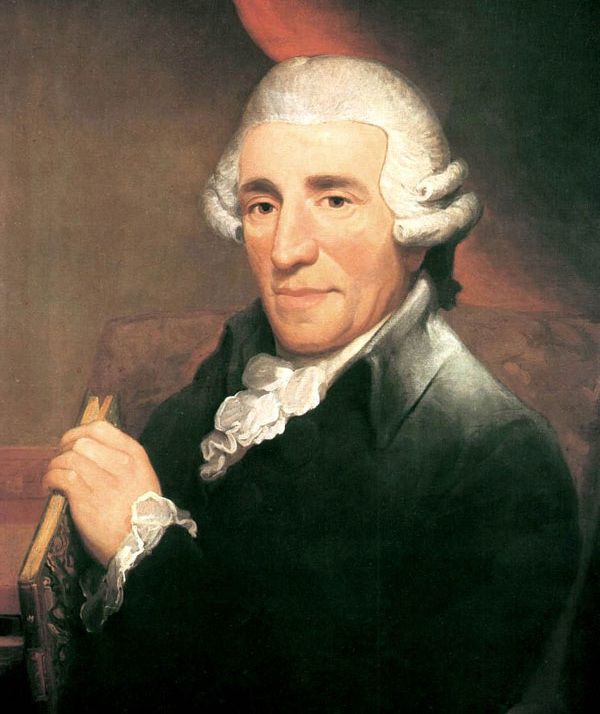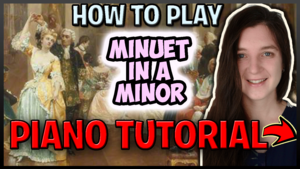
Will The Circle Be Unbroken
by Charles Gabriel

" Will The Circle Be Unbroken " is a popular Christian hymn written in 1907 by Ada R. Habershon with music by Charles H. Gabriel. The song is often recorded unattributed and, because of its age, has lapsed into the public domain. Most of the chorus appears in the later songs "Can the Circle Be Unbroken" and "Daddy Sang Bass". The song is generally played to be uplifting to the congregation, and is a frequent standard in gospel revivals.
[video width="640" height="360" mp4="https://www.easypianoonline.com/wp-content/uploads/2020/07/WillTheCircleBeUnbroken.mp4"]
Lyrics
Will The Circle Be Unbroken
There are loved ones in the glory
Whose dear forms you often miss,
When you close your earthly story
Will you join them in their bliss?
Refrain:
Will the circle be unbroken
by and by, yes, by and by?
In a better home awaiting
in the sky, in the sky?
In the joyous days of childhood,
Oft they told of wondrous love,
Pointed to the dying Savior,
Now they dwell with Him above.
[Refrain]
You remember songs of heaven
Which you sang with childish voice,
Do you love the hymns they taught you,
Or are songs of earth your choice?
[Refrain]
You can picture happy gath’rings
Round the fireside long ago,
And you think of tearful partings,
When they left you here below.
[Refrain]
One by one their seats were empty,
One by one they went away,
Now the family is parted,
Will it be complete one day?
[Refrain]
Songwriters: Ada R. Habershon, Charles H. Gabriel

House Of Gold
by Twenty One Pilots

" House Of Gold " is a song by American alternative duo Twenty One Pilots. It was among several songs from their previous EPs to be included on the track-listing of their major-label debut studio album Vessel (2013). "House of Gold" is an alternative folk and pop rock song driven by ukelele that is built on aching melody and stomping drums. Tyler Joseph wrote and dedicated the song to his mother, Kelly Joseph. "House of Gold" received generally favorable reviews from contemporary music critics. The song was release as a single from the debut album, impacting radio on August 6, 2013. The accompanying music video for "House of Gold" was directed by Warren Kommers and released on October 4, 2013. "House of Gold" has since been certified Platinum by the Recording Industry Association of America (RIAA).
[video width="640" height="360" mp4="https://www.easypianoonline.com/wp-content/uploads/2020/07/HouseOfGold.mp4"]
Lyrics
House Of Gold
She asked me, "Son, when I grow old
Will you buy me a house of gold?
And when your father turns to stone
Will you take care of me?"
She asked me, "Son, when I grow old
Will you buy me a house of gold?
And when your father turns to stone
Will you take care of me?"
I will make you queen of everything you see
I'll put you on the map
I'll cure you of disease
Let's say we up and left this town
And turned our future upside down
We'll make pretend that you and me
Lived ever after happily
She asked me, "Son, when I grow old
Will you buy me a house of gold?
And when your father turns to stone
Will you take care of me?"
Oh, and since we know that dreams are dead
And life turns plans up on their head
I will plan to be a bum
So I just might become someone
She asked me, "Son, when I grow old
Will you buy me a house of gold?
And when your father turns to stone
Will you take care of me?"
Songwriters: Tyler Joseph

Power-Up Red Mushroom Sound
by Koji Kondo

" Power - Up Sound " is a soundtrack from Super Mario, a Japanese platform video game series and media franchise created by Nintendo and featuring their mascot, Mario. Alternatively called the Super Mario Bros. The Super Mario games follow Mario's adventures, typically in the fictional Mushroom Kingdom with Mario as the player character. He is often joined by his brother, Luigi, and occasionally by other members of the Mario cast. As in platform video games, the player runs and jumps across platforms and atop enemies in themed levels. The games have simple plots, typically with Mario rescuing the kidnapped Princess Peach from the primary antagonist, Bowser. The first title in the series, Super Mario Bros., released for the Nintendo Entertainment System (NES) in 1985, established gameplay concepts and elements prevalent in nearly every Super Mario game released since. These include a multitude of power-ups and items that give Mario special powers such as fireball-throwing and size-changing into both giant and miniature sizes.
[video width="640" height="360" mp4="https://www.easypianoonline.com/wp-content/uploads/2020/07/PowerUpRedMushroom.mp4"]

1-Up Green Mushroom
by Koji Kondo

" 1 – Up Sound " is a soundtrack from Super Mario, a Japanese platform video game series and media franchise created by Nintendo and featuring their mascot, Mario. Alternatively called the Super Mario Bros. The Super Mario games follow Mario's adventures, typically in the fictional Mushroom Kingdom with Mario as the player character. He is often joined by his brother, Luigi, and occasionally by other members of the Mario cast. As in platform video games, the player runs and jumps across platforms and atop enemies in themed levels. The games have simple plots, typically with Mario rescuing the kidnapped Princess Peach from the primary antagonist, Bowser. The first title in the series, Super Mario Bros., released for the Nintendo Entertainment System (NES) in 1985, established gameplay concepts and elements prevalent in nearly every Super Mario game released since. These include a multitude of power-ups and items that give Mario special powers such as fireball-throwing and size-changing into both giant and miniature sizes.
[video width="640" height="360" mp4="https://www.easypianoonline.com/wp-content/uploads/2020/07/GreenMushroomSound.mp4"]

Underground Background Music
by Koji Kondo

" Underground Background Music " is a soundtrack from Super Mario, a Japanese platform video game series and media franchise created by Nintendo and featuring their mascot, Mario. Alternatively called the Super Mario Bros. The Super Mario games follow Mario's adventures, typically in the fictional Mushroom Kingdom with Mario as the player character. He is often joined by his brother, Luigi, and occasionally by other members of the Mario cast. As in platform video games, the player runs and jumps across platforms and atop enemies in themed levels. The games have simple plots, typically with Mario rescuing the kidnapped Princess Peach from the primary antagonist, Bowser. The first title in the series, Super Mario Bros., released for the Nintendo Entertainment System (NES) in 1985, established gameplay concepts and elements prevalent in nearly every Super Mario game released since. These include a multitude of power-ups and items that give Mario special powers such as fireball-throwing and size-changing into both giant and miniature sizes.
[video width="640" height="360" mp4="https://www.easypianoonline.com/wp-content/uploads/2020/07/UndergroundBackgroundMusic.mp4"]

Invincible Background Music
by Koji Kondo

" Invincible Background Music " is a soundtrack from Super Mario, a Japanese platform video game series and media franchise created by Nintendo and featuring their mascot, Mario. Alternatively called the Super Mario Bros. The Super Mario games follow Mario's adventures, typically in the fictional Mushroom Kingdom with Mario as the player character. He is often joined by his brother, Luigi, and occasionally by other members of the Mario cast. As in platform video games, the player runs and jumps across platforms and atop enemies in themed levels. The games have simple plots, typically with Mario rescuing the kidnapped Princess Peach from the primary antagonist, Bowser. The first title in the series, Super Mario Bros., released for the Nintendo Entertainment System (NES) in 1985, established gameplay concepts and elements prevalent in nearly every Super Mario game released since. These include a multitude of power-ups and items that give Mario special powers such as fireball-throwing and size-changing into both giant and miniature sizes.
[video width="640" height="360" mp4="https://www.easypianoonline.com/wp-content/uploads/2020/07/InvincibleBackgroundMusic.mp4"]

Castle Background Music
by Koji Kondo

" Castle Background Music " is a soundtrack from Super Mario, a Japanese platform video game series and media franchise created by Nintendo and featuring their mascot, Mario. Alternatively called the Super Mario Bros. The Super Mario games follow Mario's adventures, typically in the fictional Mushroom Kingdom with Mario as the player character. He is often joined by his brother, Luigi, and occasionally by other members of the Mario cast. As in platform video games, the player runs and jumps across platforms and atop enemies in themed levels. The games have simple plots, typically with Mario rescuing the kidnapped Princess Peach from the primary antagonist, Bowser. The first title in the series, Super Mario Bros., released for the Nintendo Entertainment System (NES) in 1985, established gameplay concepts and elements prevalent in nearly every Super Mario game released since. These include a multitude of power-ups and items that give Mario special powers such as fireball-throwing and size-changing into both giant and miniature sizes.
[video width="640" height="360" mp4="https://www.easypianoonline.com/wp-content/uploads/2020/07/CastleBackgroundMusic.mp4"]

Boss Of The Fortress
by Koji Kondo

" Boss Of The Fortress " is a soundtrack from Super Mario, a Japanese platform video game series and media franchise created by Nintendo and featuring their mascot, Mario. Alternatively called the Super Mario Bros. The Super Mario games follow Mario's adventures, typically in the fictional Mushroom Kingdom with Mario as the player character. He is often joined by his brother, Luigi, and occasionally by other members of the Mario cast. As in platform video games, the player runs and jumps across platforms and atop enemies in themed levels. The games have simple plots, typically with Mario rescuing the kidnapped Princess Peach from the primary antagonist, Bowser. The first title in the series, Super Mario Bros., released for the Nintendo Entertainment System (NES) in 1985, established gameplay concepts and elements prevalent in nearly every Super Mario game released since. These include a multitude of power-ups and items that give Mario special powers such as fireball-throwing and size-changing into both giant and miniature sizes.
[video width="640" height="360" mp4="https://www.easypianoonline.com/wp-content/uploads/2020/07/BossOfTheFortress.mp4"]

I Write The Songs
by Bruce Johnston

" I Write The Songs " is a popular song written by Bruce Johnston in 1975. Barry Manilow's version reached number one on the Billboard Hot 100 chart in January 1976 after spending two weeks atop the Billboard adult contemporary chart in December 1975. It won a Grammy Award for Song of the Year and was nominated for Record of the Year in 1977. Billboard ranked it as the No. 13 song of 1976.
[video width="640" height="360" mp4="https://www.easypianoonline.com/wp-content/uploads/2020/07/IWriteTheSongs.mp4"]
Lyrics
I Write The Songs
I've been alive forever, and I wrote the very first song
I put the words and the melodies together
I am music and I write the songs
I write the songs that make the whole world sing
I write the songs of love and special things
I write the songs that make the young girls cry
I write the songs, I write the songs
My home lies deep within you
And I've got my own place in your soul
Now, when I look out through your eyes
I'm young again, even though I'm very old
Oh my music makes you dance
And gives you spirit to take a chance
And I wrote some rock 'n' roll so you can move
Music fills your heart
Well, that's a real fine place to start
It's from me it's for you
It's from you, it's for me
It's a worldwide symphony
Songwriters: Bruce Johnston

The Notebook
Main Theme
by Aaron Zigman

" The Notebook Main Theme " is a soundtrack to the film The Notebook. The Notebook is a 2004 romantic drama film directed by Nick Cassavetes and written by Jeremy Leven from Jan Sardi's adaptation of the 1996 novel by Nicholas Sparks. The film stars Ryan Gosling and Rachel McAdams as a young couple who fall in love in the 1940s. Their story is read from a notebook in the present day by an elderly man (played by James Garner), telling the tale to a fellow nursing home resident (played by Gena Rowlands, who is Cassavetes's mother).
[video width="640" height="360" mp4="https://www.easypianoonline.com/wp-content/uploads/2020/07/TheNotebook.mp4"]

Trumpet Concerto In E Flat
3rd Movement
by Franz Joseph Haydn

" Trumpet Concerto In E flat " was written by Franz Joseph Haydn, an Austrian composer of the Classical period. He was instrumental in the development of chamber music such as the piano trio. His contributions to musical form have earned him the epithets "Father of the Symphony" and "Father of the String Quartet".
Haydn spent much of his career as a court musician for the wealthy Esterházy family at their remote estate. Until the later part of his life, this isolated him from other composers and trends in music so that he was, as he put it, "forced to become original". Yet his music circulated widely, and for much of his career he was the most celebrated composer in Europe.
He was a friend and mentor of Mozart, a tutor of Beethoven, and the older brother of compos-er Michael Haydn.
[video width="640" height="360" mp4="https://www.easypianoonline.com/wp-content/uploads/2020/07/TrumpetConcertoInEFlat.mp4"]

Pizzicato Polka
by Johann Strauss

" Pizzicato Polka " Op. 449, is a polka composed by Johann Strauss II. It was written in 1892 for concerts to be given under Eduard Strauss in Hamburg. Strauss later inserted the work as a ballet between the second and third acts of his operetta Fürstin Ninetta [de] (Princess Ninetta).
The work is named Pizzicato Polka because the stringed instruments were plucked (pizzicato) throughout. There is also an old Pizzicato Polka [de] which Johann Strauss composed in 1869 with his brother Josef.
[video width="640" height="360" mp4="https://www.easypianoonline.com/wp-content/uploads/2020/07/PizzicatoPolka.mp4"]

[xyz-ihs snippet="NavigationLinksBlock-Common"]
The Rose Of Tralee
- Irish Traditional

" The Rose Of Tralee is a nineteenth-century Irish ballad about a woman called Mary, who because of her beauty was called The Rose of Tralee. The Rose of Tralee International Festival had been inspired by the ballad.
The words of the song are credited to Edward Mordaunt Spencer and the music to Charles William Glover, but a story circulated in connection with the festival claims that the song was written by William Pembroke Mulchinock, out of love for Mary O'Connor, a poor maid in service to his family.
In 2019 the Rose of Tralee International Festival, as part of their 60th Anniversary living history promotion, employed the services of Dr. Andrea Nini, a forensic linguist working on cases of disputed authorship. His report concluded that a poem written by Tralee poet William Pembroke Mulchinock called Smile Mary My Darling was published and passed off by Edward Mordaunt Spencer in 1846 in his book of poetry The Heir of Abbotsville. This poem was adapted into a poem called The Rose of Tralee with the air being re-set by Charles William Glover from one of his previous ballads.
[video width="640" height="360" mp4="https://www.easypianoonline.com/wp-content/uploads/2020/07/TheRoseOfTralee.mp4"]
Lyrics
The pale moon was rising above the green mountain
The sun was declining beneath the blue sea
When I strayed with my love to the pure crystal fountain
That stands in beautiful vale of Tralee.
She was lovely and fair as the rose of the summer
Yet, 'twas not her beauty alone that won me
Oh no! 'Twas the the truth in her eye ever beaming
That made me love Mary, the Rose of Tralee.
The cool shades of evening their mantle were spreading
And Mary all smiling was listening to me
The moon through the valley her pale rays was shedding
When I won the heart of the Rose of Tralee.
Though lovely and fair as the rose of the summer
Yet, 'twas not her beauty alone that won me
Oh no! 'Twas the the truth in her eye ever beaming
That made me love Mary, the Rose of Tralee.
Songwriters: Edward Mordaunt Spencer, Charles William Glover

Misty Mountains
by Donaldson / Long / Roche / Roddick

" Misty Mountains " is a song sung by Thorin II Oakenshield and Company in J.R.R. Tolkien's novel The Hobbit. As Tolkien left no title for the song, "Far Over The Misty Mountains Cold" is sometimes referred to as The Dwarf Song, Thorin's Song, The Song of The Lonely Mountain, or shortened to simply "The Misty Mountains".
The song explains the backstory of Thorin and Company, and foreshadows the adventure to come for the group. It also helps lead to the large development of Bilbo from his often quiet and calm "Baggins" nature, to the more adventurous and outgoing "Tookish" side of his heritage, an evolution that takes most of the novel.
[video width="640" height="360" mp4="https://www.easypianoonline.com/wp-content/uploads/2020/07/MistyMountains.mp4"]
Lyrics
Misty Mountains
Far over the Misty Mountains cold
To dungeons deep and caverns old
We must away, ere break of day
To find our long forgotten gold
The pines were roaring on the height
The winds were moaning in the night
The fire was red, it flaming spread
The trees like torches blazed with light
The wind was on the withered heath
But in the forest stirred no leaf:
There shadows lay be night or day
And dark things silent crept beneath
(Aaaahh aaahh...)
The wind went on from West to East
All movement in the forest ceased
But shrill and harsh across the marsh
Its whistling voices were released
Farewell we call to hearth and hall!
Though wind may blow and rain may fall
We must away ere break of day
Far o'er the wood and mountain tall
Songwriters: David Geoffrey Donaldson, Stephen Gerard Roche, Janet Roddick, David Long

Home On The Range
by Dan Kelly

" Home On The Range " is a classic western folk song sometimes called the "unofficial anthem" of the American West. It is also the official anthem of the state of Kansas. Dr. Brewster M. Higley of Smith County, Kansas, wrote the lyrics in the poem "My Western Home" in 1872. In 1947, it became the Kansas state song. In 2010, members of the Western Writers of America chose it as one of the Top 100 western songs of all time. Higley's friend Daniel E. Kelley (1808–1905) wrote the melody on his guitar. Higley's original words are similar to those of the modern version of the song, but not identical; the original did not contain the words "on the range". The song was eventually adopted by ranchers, cowboys, and other western settlers, and it spread throughout the United States in various forms.
[video width="640" height="360" mp4="https://www.easypianoonline.com/wp-content/uploads/2020/07/HomeOnTheRange.mp4"]
Lyrics
Home On The Range
Oh, give me a home where the buffalo roam
Where the deer and the antelope play
Where seldom is heard a discouraging word
And the skies are not cloudy all day
Home, home on the range
Where the deer and the antelope play
Where seldom is heard a discouraging word
And the skies are not cloudy all day
The red man was pressed from this part of the west
It's not likely he'll ever return
To the banks of Red River where seldom if ever
His flickering campfires still burn
Home, home on the range
Where the deer and the antelope play
Where seldom is heard a discouraging word
And the skies are not cloudy all day
How often at night when the heavens are bright
I see the light of those flickering stars
Have I laid there amazed and asked as I gazed
If their glory exceeds that of love
Home, home on the range
Where the deer and the antelope play
Where seldom is heard a discouraging word
And the skies are not cloudy all day
Songwriters: Daniel E. Kelley, Dr. Brewster M. Higley







































